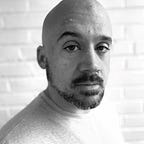Fictional characters are not real people
I hear this question from students too often, not in the rough draft stage, but in second draft (and beyond) editing especially after a rough workshop where their writer/reader friends break their hearts by telling them that they don’t understand what drives their characters to the decisions they’re making.
And though the craft of fiction aren’t all encompassing solutions, I almost always tell these students one thing:
Stop thinking of your characters as real people.
It may feel like a wise strategy to create fictional characters out of what you know about real people, the truth is that while characters are complex, people are just complicated. Additionally, characters’ stories unfold in an engaging sequence of events, while a real person’s life doesn’t. Think about it: we spend most of our lives sleeping. Who would want to write a story about that? Finally, characters achieve their goals.
The protagonist is reunited with their family, lands the dream job, defeats the monster, or wins over a lover. Life, and the real people living it, don’t achieve their goals as clearly or definitively. Don’t believe me? Check out the recidivism rates for any habit people try to learn-losing weight, cutting back on drinking, getting 10,000 steps a day-the number of people who return to poor habits is high because real people are very messy. If you were to write your characters like they were real people your story would be as bizarre and confusing as, well, real life.
That doesn’t make for moving fiction.
How should you approach writing characters?
A new approach to writing convincing characters requires a big paradigm shift: don’t think of your characters as real people, instead envision them as metaphors with narrative destinies that have been designed.
Designed is the critical mindset change here. Designed means that we can select traits for the narrative destiny we want our character to achieve. What is narrative destiny? Simply, it’s the climax of the story when your character must face the consequences of all their choices throughout the plot. And since it’s impossible to separate character from plot , here is a way to achieve narrative destiny through character design:
- A character is designed through their conscious and unconscious traits. These traits are called dimensions.
- A character’s dimensions drive their desires.
- A character’s desires are hindered by the physical, social, emotional, and spiritual forces arrayed against them. In pursuit of their desires, characters are forced to make choices that bring them into tension with these forces.
- The results of a character’s choices are the plot events of a narrative.
- The resolution of plot events is a character’s narrative destiny.
How to design convincing characters
Protagonists, because their main role in the narrative, have the most dimensionality of any characters in your cast. For a novel, a well designed protagonist should have at least 3 outer dimensions-a dimension displayed to the reader through the action of the story-contrasted by 3 inner dimensions.
The longer your narrative (think a multi-season TV series) is, the greater the outer (and inner) dimensionality your protagonist can sustain. The shorter a narrative, like a short story, the less outer dimensionality a protagonist can possess.
Equally important are your character’s inner dimensions. These are their private or subconscious traits that are drawn out by the pressure of your plot or, for our purposes, the other characters in the narrative’s cast.
Inner dimensions are easy to select, as they are the opposites of the outer dimensions. If your protagonist is outwardly rational, confident, and independent, then they should also subconsciously be impulsive, subservient, and romantically longing.
Yet, if the inner dimension is private or subconscious, then how do we reveal them? By designing-there’s that word again-a cast of characters around the protagonist that draws out the fullest expression of their dimensionality.
How do I design a cast of characters around my protagonist?
All of your other characters will individually have less dimensionality than the protagonist because, after all, the story isn’t about them. But! That doesn’t mean they shouldn’t have a dimension(or two) that contrasts or highlights the protagonist’s own dimensions.
Characters in the immediate circle of the protagonist-sidekick, mentor, helper, antagonist-should have outer traits that draw something out of the protagonist. If your protagonist is rational, confident, and independent then those around them should be designed in a way that either challenges those dimensions or exposes them positively.
How about a mentor that’s super-rational and reveals your protagonist’s subconscious impulsivity?
Or maybe a sidekick that’s timid and unsure, pulling out the confidence that your protagonist seems to have in an endless supply.
An antagonist, as the opposing force of the story, can take the independence of the protagonist and throw it on its head, not by crushing them into subservience, but putting the protagonist in situations where their independence is pumped up to its most extreme form of complete isolation from the help and love of others.
Why have a well designed protagonist and cast?
Each character that contacts your protagonist should be designed in such a way that their own outer and inner dimensionality creates situations where your protagonist is forced to act based on their own dimensions. This process of designing traits and then designing another character to expose those traits is exactly critical to cast design. A well-designed cast not only gives your narrative a coherent and organic feel, it also ensures that plot events are ratcheted up to the maximum level of tension so that they can expose characters for who they truly are when they’re forced to make choices to deal with their circumstances.
What can be more real than that?
Originally published at https://www.notmfa.com on March 30, 2022.
